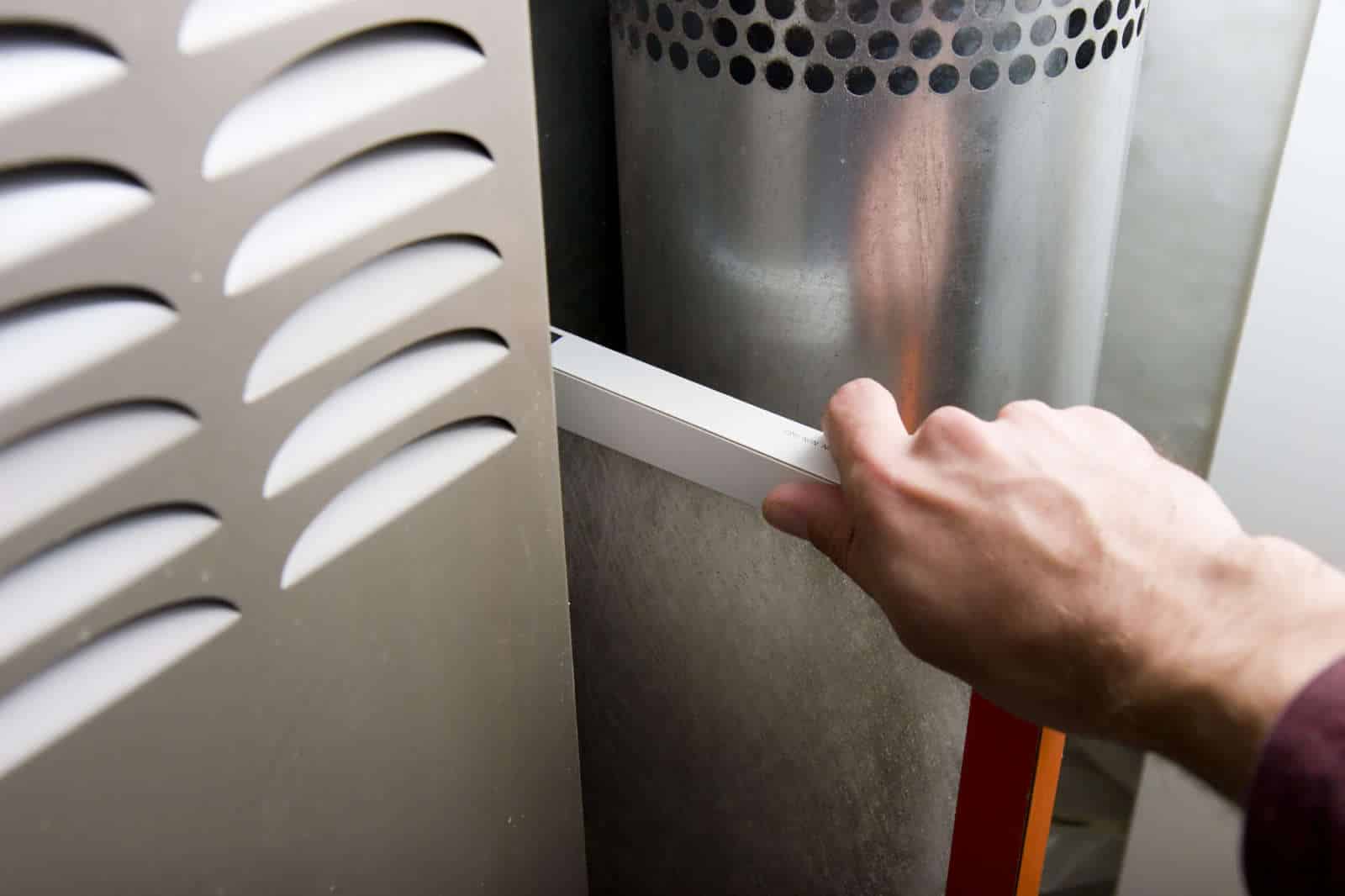Every home has two things. Furnaces and carbon monoxide.
Wait, what!?!
Furnaces… sure, sure. By law, every home must have some form of heating, whether it’s an oil, propane, gas, or electric heating unit.
But carbon monoxide? Every home has it?
They sure do.
Carbon monoxide is natural byproduct of burning fuel. That means that every time you use your gas stove, you create a little bit of a CO in your home.
The question of how much carbon monoxide is dependent on the current condition of your appliance.
If your furnace is burning a blue flame, very little CO is created and the unit is considered safe.
The presence of a yellow or red flame indicates incomplete combustion and could mean dangerous levels of carbon monoxide are being produced.
In addition to your furnace, there are a host of other items that create carbon monoxide. Check out our other article for a full list of a what causes carbon monoxide.
Furnace and Carbon Monoxide
But let’s talk about furnaces and carbon monoxide.
Because, really, does anyone operate their gas stove long enough to experience carbon monoxide poisoning?
Well, sure, it’s possible.
We don’t have the problem so much in San Diego, but in the north, where snow storms are common, it’s not unusual to lose power and be stranded at home.
In those situations, you may feel like cranking up the oven and opening the door is a good idea, but it’s not!
Prolonged exposure to an open oven door is just as deadly as running your car in an enclosed garage.
Perhaps not as fast, but no less dangerous.
But we’re supposed to be talking about furnaces.
I’ll spare you all the details on how a furnace works, the short of it is that there are two parts to every furnace.
There’s the part that clean air passes over, where it’s warmed up, and then passed along to your home.
And then there’s the part that passes over the flame, heats up the pipes, and then leaves your home through proper ventilation.
The latter part carries dangerous carbon monoxide fumes from the burning of fuel.
If this part, the heat exchanger, cracks, it can be dangerous because the furnace then allows carbon monoxide to mix with the clean air and be disbursed throughout your home.
So how do we safeguard ourselves against this happening?
How to prevent furnaces leaking carbon monoxide
Ensure proper furnace installation
There are parts of your home where hiring a handyman might be acceptable, but your furnace installation is not one of them.
Be sure to work with only a licensed HVAC technician.
If you have any doubts about whether your system was installed properly, call a professional to come and inspect your unit.
Annual Furnace Preventative Maintenance
While we’re talking about professional inspections, your furnace should receive a tune-up at least once a year.
Here at Precision Temperature, we recommend that your entire HVAC system receive two tune-ups per year.
One in the Spring for your AC, and the other in the Fall for your furnace.
These tune-ups give your system a good clean, ensure everything is working properly, and overall get your unit ready for the cold winter season.
Change your air filter regularly
While the air filter won’t directly affect carbon monoxide, it does help the overall condition of your furnace.
In general, air filters should be changed every 90 days while the unit is in operation.
That means for those with short winters, like San Diego, we may only need to change our filters once per year.
But for others with prolonged winters, you may change your filter as many as three times per year.
The important thing is that you actually change it.

Install carbon monoxide detectors
It probably goes without saying that if you want to safe guard against carbon monoxide from your furnace that you should have a carbon monoxide detector.
There are all sorts of carbon monoxide detectors available, but we recommend this one.
Don’t think you need one or that they don’t work?
One reviewer of the above unit wrote that they used the detectors for months before suddenly one night at 1:30 AM the alarm went off.
They swapped out the detector and the new one went off as well.
After the fire department came out, they discovered the water heater ventilation was plugged up by a mouse nest which caused dangerous levels of carbon monoxide to spill into their daughter’s bedroom.
Take no chances my friends.
Get a carbon monoxide detector.
Warning signs your furnace has a problem
Even with all of these safeguards, there’s a chance that your furnace will still begin to fail, whether simply by age or from mechanical issues.
In those cases, keep an eye out for these furnace warning signs:
Age of your furnace
The average lifespan of a furnace is around 15 years.
Sure, it can last longer (up to 30 years), but they also give out sooner.
If your furnace is older than 10 years, keep an eye on it.
And if it’s older than 20 years, be extra vigilant as your furnace is reaching the end of it’s years.
It’s often a good idea to replace your furnace before you actually need to.
The last thing you want is to go without a furnace when it breaks down in the middle of winter. Even if it’s only a day or two.
Should your furnace be replaced? Probably.
Recent furnace repairs
It’s said that furnaces (and air conditioners) breakdown the most in the last 2 years of their life.
If the cost to replace a furnace is $4,000, does it make sense to spend $1,500 in repairs every year?
Of course not!
If you find yourself constantly shelling out cash to keep your old furnace working, it’s time to consider a replacement.
Energy bills on the rise
If you notice that your energy bills keep climbing, either month to month or year to year, and your usage hasn’t changed, your furnace could be the culprit.
As furnaces age, they lose efficiency. That means they have to work extra hard to provide the same level of heat.
And sometimes they can’t even hit the mark like they used to.
Furnace fails to reach temperature
As I just mentioned, when a furnace fails to keep your comfortable in your home, this is a sign that your furnace is having problems.
Now, a furnace that blows cold air could be a simple fix, but it might also be signs of a greater issue.
Only a professional technician will be able to tell you for certain.
Frequent illnesses
Do you, or your family members, feel unwell when the furnace is running?
Do you experience flu like symptoms, only without the fever?
These are signs of carbon monoxide poisoning, and the likely culprit is your furnace.
Turn it off immediately and call the fire department or your local gas provider.
Additional Furnace Safety Tips
- Keep your furnace clean and free from obstructions.
- Make sure the ignition area is clean.
- Keep the system well lubricated (will need completed by a licensed HVAC technician).
- Ensure the area is clear of combustible material.
- Never use your gas oven or stove to heat your home. This increases your risk for carbon monoxide poisoning.
- Don’t close registers in your home. This causes improper air flow in the ducting which could damage your system.
Need Furnace Help?
Precision Temperature is standing by ready and willing to help San Diego with all your furnace needs.
If you’re worried about your furnace and carbon monoxide, call us at 619-588-5321.






